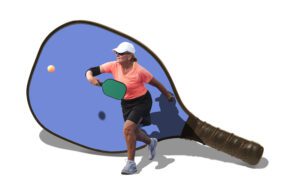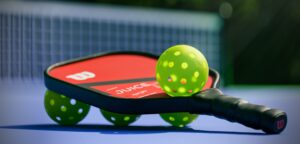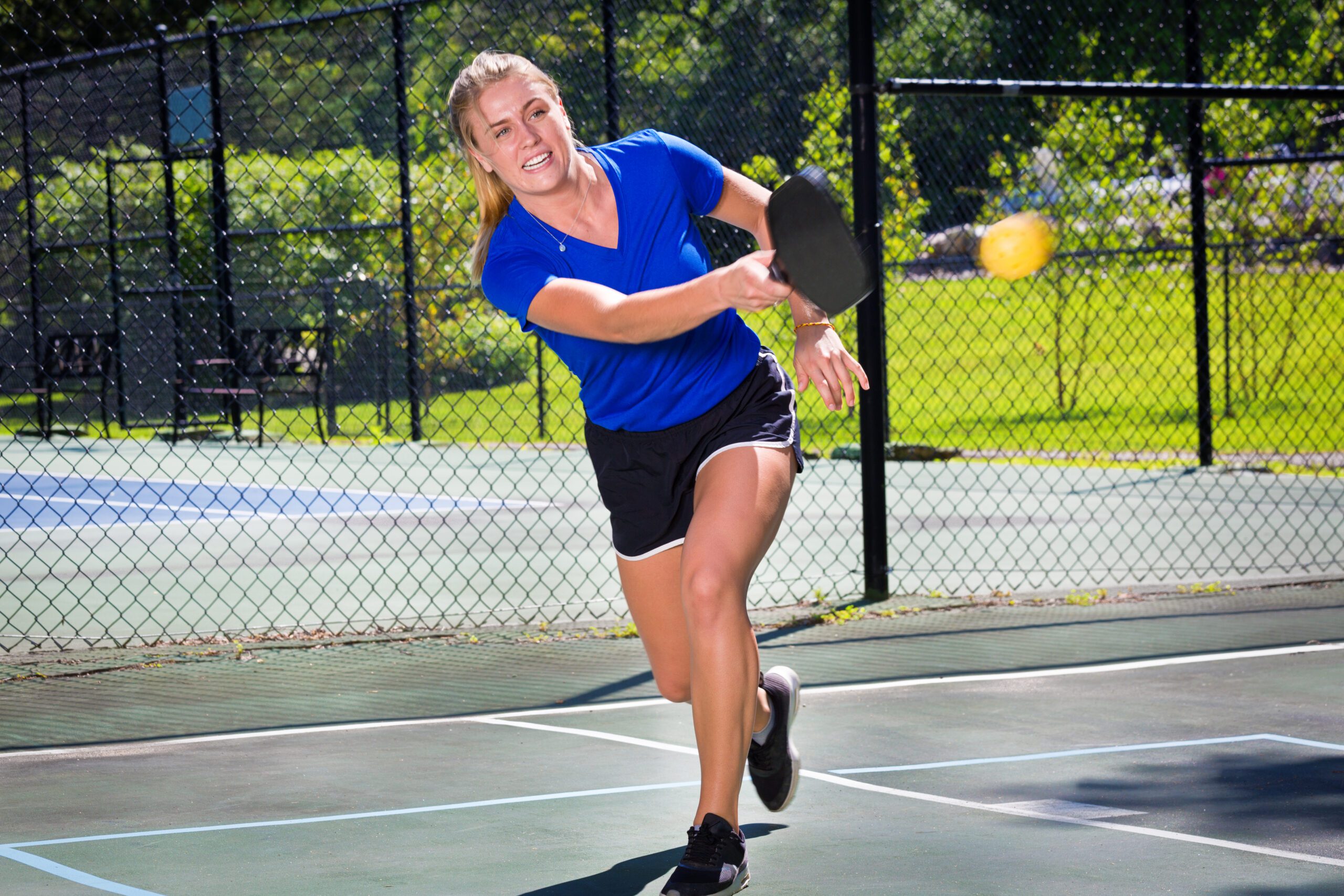Ready to transform your pickleball serves from “meh” to “wow”? You’re in the right place! Let’s embark on a journey to make your serve not just a game-starter, but a game-changer. Here’s how you can practice your pickleball serves to become the envy of the court.

Master the Fundamentals: The Key to a Mighty Serve
First things first, let’s get back to basics. Like a chef perfecting their signature dish, you need to understand the ingredients of a great serve. In pickleball, this means mastering the underhand serve technique, knowing the rules, and familiarizing yourself with the different types of serves: the lob, the drive, and the drop. Each serve has its own flavor, so savor them all!
Serve Up with Technology: The Ball Machine Advantage
Imagine a tireless practice buddy who’s always ready for a serve-and-return session. That’s your ball machine! It’s a fantastic way to practice your serves with different speeds and angles, mimicking real-game scenarios. It’s like having a coach who never gets tired!
Target Practice: Aim to Impress
Why not turn your practice into a fun game? Set up targets on the court using cones or markers, and try hitting them with your serves. It’s like playing darts, but with a pickleball paddle. This not only improves your accuracy but also adds an element of fun to your practice sessions.
Understanding the Sport: The Spirit of Pickleball
Pickleball isn’t just a sport; it’s a party on a court! A blend of tennis, badminton, and ping pong, it’s all about fun and strategy. And in this party, your serve is like the opening track – it sets the mood for the game. Remember, a good serve is more than just hitting the ball; it’s about strategic placement and spin.
The Serving Techniques: Adding Spin and Style
Variety is the spice of life, and it’s true for pickleball serves too. Mix things up! Practice different positions, spins, and placements. Keep your opponents guessing and on their toes. It’s like being a magician on the court, surprising your audience with every serve.
The Footwork Dance: Balance and Positioning
Your feet are as important as your hands in pickleball. Focus on your footwork, ensuring you’re well-balanced and positioned correctly for each serve. It’s like doing a dance – every step matters!
The Basics of Serving in Pickleball
In the energetic world of pickleball, serving is more than just a way to start the game; it’s your first strike, the opening note of your court symphony. Let’s dive into the basics of serving in pickleball and how you can make each serve count.
The Serve
Think of the serve as your opening move in a chess game. In pickleball, it’s an underhand shot, where finesse meets strategy. The ball must be struck below the waist, and the server, standing behind the baseline, must aim diagonally across the court. The ball must land in the opposite service court without touching the non-volley zone or the net. This is where control meets power.
Types of Serves
Pickleball serves come in various flavors, each with its own strategic purpose:
- Underhand Serve: The classic and most common. It’s all about precision and placement.
- Topspin Serve: Adds pressure on the receiver, forcing a high return. It’s like adding a twist to your serve.
- Slice Serve: This serve makes the ball curve and bounce unpredictably, throwing off your opponent.
- Lob Serve: It’s the high-flyer, forcing the receiver to backtrack for a high return. Think of it as the serve that tests agility.
Serving Tips
Consistent practice is key to a killer serve. Try hitting against a wall or serving into a bucket to improve. Work on different types of serves to keep your opponent guessing. Varying the speed and placement of your serves can throw your opponent off balance, giving you the upper hand.
Types of Pickleball Serves
Knowing the different types of serves in pickleball is like having an arsenal at your disposal. Each serve has its own technique and strategy, essential for keeping your opponent on their toes.
Drive Serve
The Drive or Power Serve is all about raw strength. The goal is to hit the ball hard and deep into your opponent’s court, making it a challenge to return. It’s the serve that tests both your power and your opponent’s reflexes.
Lob Serve
The Lob Serve is the master of surprise. It’s a high, arcing serve intended to soar over your opponent’s head, landing deep in their court. This serve is perfect for catching your opponent off guard and forcing them to hustle back.
Drop Serve
The Drop Serve is the epitome of control. It’s a slower, more deliberate serve aimed close to the net. The objective is to make your opponent scramble forward, setting you up for the next play.
Half-Volley Serve
The Half-Volley Serve is all about timing and precision. It’s executed just after the ball bounces, catching your opponent unprepared and forcing them to move quickly. This serve is a testament to your skill and control.
Each serve, with its unique technique and strategy, contributes to a dynamic and unpredictable game. Mastering these serves will not only enhance your game but also make it more enjoyable and challenging for both you and your opponent.
Practicing the Underhand Serve

The underhand serve in pickleball is like the opening note in a musical performance – it sets the rhythm and tone for your game. Perfecting this serve involves a blend of technique and consistency. Here’s how you can fine-tune your underhand serve:
Initial Positioning
Imagine you’re an archer readying for a shot. Your stance is key. Stand behind the baseline, feet shoulder-width apart, knees slightly bent. Hold the ball in your non-dominant hand, paddle in the dominant. Keep the paddle level and poised for action. This stance is your foundation – stable, balanced, ready.
Swing Technique
Picture a pendulum – your swing should have the same fluidity and control. Start by drawing the paddle back and down, eye on the ball. Then, in one smooth motion, swing the paddle forward and up, making contact below the waist. This motion is all about rhythm and grace. Think of it as a dance where you and the paddle move as one.
Follow Through
The follow-through is like the final note of your serve – it must be just right. After contact, guide your paddle down and across your body. This isn’t just about hitting the ball; it’s about completing the motion with finesse, readying yourself for the next play. It’s a sign of a player who’s in control and prepared.
Mastering the Power Serve
Unleashing a power serve in pickleball is like throwing a fastball in baseball – it’s all about speed and surprise. Here’s how you can add this powerful tool to your pickleball arsenal:
Proper Grip
Think of your paddle as an extension of your arm. The grip is crucial. Hold it with a relaxed grip, your index finger guiding its angle. This grip is the key to unleashing power while maintaining control – it’s where finesse meets force.
Body Position
Your body is the launchpad for your serve. Stand with feet apart, balanced and ready. Imagine you’re a sprinter on the blocks – energy coiled, ready to spring. Bend your knees slightly, keep your weight forward. This stance is about potential energy, ready to be converted into a powerful serve.
Serve Execution
The power serve is a full-body movement. Engage your shoulder, arm, and wrist in a fluid, concerted action. Think of it as cracking a whip – the power builds from your shoulder, down your arm, and snaps at the wrist. As you strike, add a wrist flick for that extra spin, making the ball dance unpredictably.
Mastering the power serve is about practice, patience, and persistence. It’s a journey – each serve getting you closer to that explosive, game-changing shot.
In pickleball, as in any sport, the key to improvement is consistent practice and a willingness to learn and adapt. Whether you’re refining your underhand serve or mastering the art of the power serve, remember that each shot is a step in your journey to becoming a better player. Embrace the process, enjoy the game, and watch as your skills flourish on the court.
Perfecting the Lob Serve
The lob serve in pickleball is like a curveball in baseball – it’s unexpected, tricky, and can totally change the game dynamics. Here’s how you can master this skillful serve:
Ball Toss
The magic of the lob serve starts with the ball toss. It’s like launching a kite – you need just the right amount of lift. Toss the ball high enough to reach its apex above the net. This gives you the perfect height to clear the net and drop the ball into the backcourt. Practice the toss until it feels as natural as breathing.
Swing and Contact
Think of your swing as painting a rainbow – smooth, arched, and graceful. The goal is to hit the ball with an upward stroke, giving it enough air to sail over the net. It’s about finesse, not force. Focus on hitting the ball with the sweet spot of your paddle, creating a beautiful arc that will leave your opponent scrambling.
Serve Recovery
After delivering your lob serve, it’s time to switch gears quickly. Like a cat ready to pounce, you need to be prepared for the return. Stay on your toes, paddle at the ready, anticipating your opponent’s move. It’s a game of quick thinking and quicker reflexes.
Common Serving Mistakes to Avoid
Even the best pickleball players can fall into serving traps. Here are some common mistakes to steer clear of:
1. High Toss
A high toss is like a wild card – it’s unpredictable. Instead, aim for a controlled, lower toss to maintain accuracy and consistency in your serve. Think of it as setting the stage for a precise, well-executed play.
2. Faulty Footwork and Body Positioning
Your serve is only as good as your stance. If your feet are misaligned, it’s like trying to drive a car with misaligned wheels – you won’t get far. Keep your feet shoulder-width apart, body facing the net, poised for action.
3. Poor Ball Placement
Placing the ball incorrectly is like missing the bullseye in darts. Aim for the middle of the service box to optimize your chances of a successful serve. It’s about finding that sweet spot where challenge meets opportunity.
4. Lack of Spin
A serve without spin is like a story without a twist – too predictable. Adding spin adds mystery and complexity to your serve, making it harder for your opponent to predict and return. Experiment with topspin or backspin to find your signature style.
By avoiding these common pitfalls and continuously refining your serving technique, you’ll not only enhance your gameplay but also enjoy the satisfaction of a well-executed serve. Remember, in pickleball, as in life, it’s often the little things that make a big difference. Keep practicing, stay alert, and watch as your serves become a powerful part of your pickleball arsenal.
Tips for Consistent Serving
Consistent serving in pickleball is like being a reliable drummer in a band – you set the rhythm and pace of the game. Here’s how you can develop a serving technique that’s both effective and reliable:
1. Master the Basics
Think of the basics as your serving foundation. Ensure your grip is on point, your stance is balanced, and your swing is smooth. It’s like tuning an instrument before a performance – essential for a good start.
2. Focus on Accuracy
Accuracy trumps power in the world of serving. It’s like being an archer; aim for a specific spot and hit it consistently. This precision makes it challenging for your opponent to predict and return your serve effectively.
3. Practice Your Spin
Spinning the ball is like adding a twist to your serve – it keeps your opponent guessing. Practice topspin, backspin, and sidespin to add variety to your serves, making them more challenging to return.
4. Mix It Up
Variety is the spice of life, and it’s true for pickleball serves too. Don’t stick to one type of serve; mix it up! Serve deep, short, left, right, with different spins. It keeps the game exciting and your opponent on their toes.
5. Stay Relaxed
A relaxed body leads to a smoother serve. Tension can throw off your game, so take deep breaths, loosen up, and maintain focus. Imagine you’re flowing like water – adaptable and fluid.
Conclusion
In the vibrant world of pickleball, the serve is more than just a starting point; it’s a strategic tool that can set you apart. By embracing the tips and techniques discussed, from perfecting different serve types to avoiding common mistakes, you are equipping yourself with a diverse serving skill set.
Remember, practice is key. Incorporating drills like target practice not only hones your accuracy but also adds an element of fun to your training. Don’t overlook the importance of footwork – it’s the dance steps to your serving rhythm.
Partnering up to practice return of serves is equally vital. It’s like a conversation – you serve, they return, and you learn to anticipate and respond. This interaction is crucial for improving your overall game.
Ultimately, the journey to becoming a proficient pickleball player is both challenging and rewarding. Each serve, each game, each practice session adds a stroke to your masterpiece as a player. So, keep practicing, stay enthusiastic, and embrace the joy of continuous learning and improvement in the dynamic game of pickleball.

